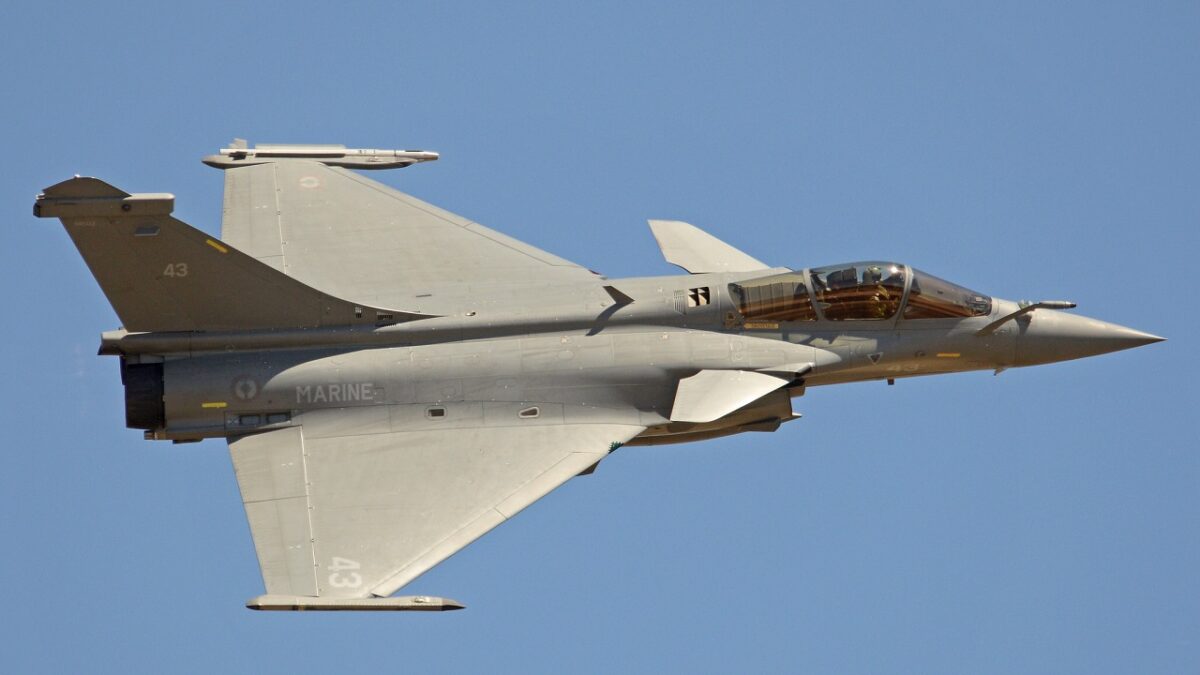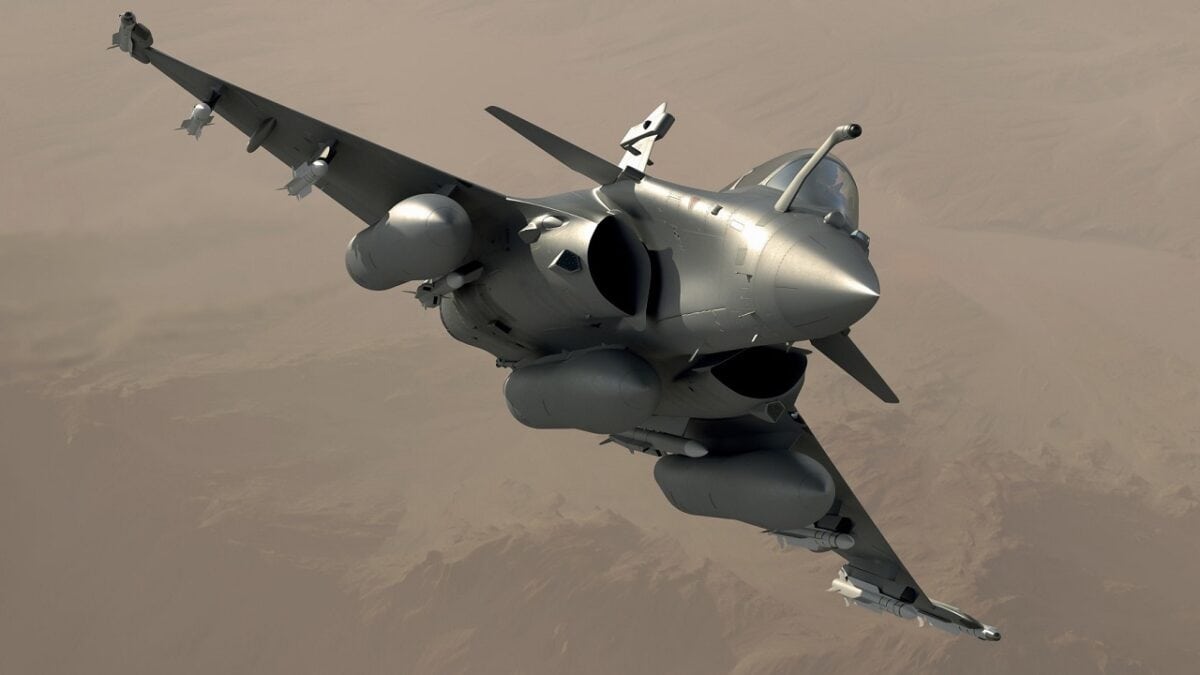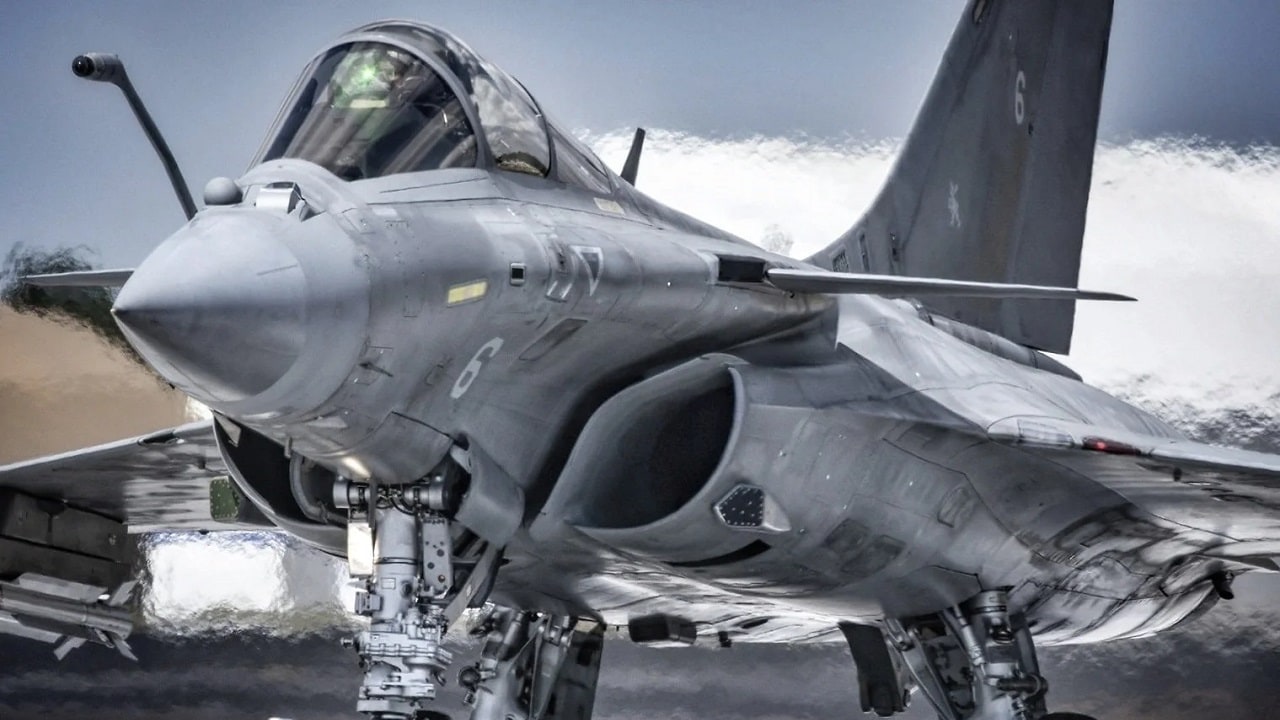Meet the Dassault Rafale – The “Omin-Role” Fighter – The Dassault Rafale – which means literally “gust of wind” or “burst of fire” in a more military sense – was conceived for use by the French Air Force and Navy as an “omnirole” fighter, meaning that it would replace seven types of combat aircraft then in operation.
The aircraft was developed to carry out a wide range of missions including air-defense/air-superiority, anti-access/area denial, reconnaissance, close air support, dynamic targeting, air-to-ground precision strike/interdiction, anti-ship attacks, nuclear deterrence, and even buddy-buddy refueling.
The various requirements needed for the multi-mission roles were taken into account during the aircraft’s early development, which led engineers to create an aircraft that was able to go above the needs for each type of mission, and serve as a true “force multiplier.” The Rafale is slated to be the French armed force’s prime combat aircraft until 2050 and beyond.
Origins: Avion de Combat Experimentale
The Rafale can trace its origins back to the Avion de Combat Experimentale (ACX) program in the early 1980s before France’s withdrawal from the multinational European Fighter Aircraft (EFA) project in 1985. It has been suggested that one reason why Paris opted to pull out of the EFA program was its requirement for smaller and lighter combat aircraft that could operate from aircraft carriers.
The ACX originally took the form of a technology demonstrator and was first flown in July 1986, and subsequently re-designated Rafale A. It established the primary design features for the production of the Rafale, including the basic aerodynamic configuration, fly-by-wire control system and structure that made extensive use of composites.
In its initial form, the Rafale A demonstrator was powered by a pair of 68.6kN (15,422 pounds) thrust General Electric F404-GE-400 turbofans. Experiences with the Rafale A led to the Rafale C, initially known as the Avion de Combat Tactique (ACT), which first flew in May 1991. It was powered by two 75kN (16861pound) SNECMA M88-2 afterburning turbofans.
A Burst of Fire
The fourth-generation combat aircraft utilizes a quadruple-redundant fly-by-wire system that provides for longitudinal stability and superior handling performance across three digital channels and one separately designed analog channel. The close-coupled/delta wing configuration also ensures that the Rafale remains agile even at high angles of attack.
The airframe radar cross-section is minimized by using appropriate materials and mould line, including serrated edges to the trailing edge of the wings and canards.
Key Rafale C Specs:
Type: Multi-role fighter
Dimensions: 15.27m (50ft, 1.25-inches) long; 10.80m (35ft, 5.25-inches) wingspan; and 5.35 (17ft, 6.25-inches) height
Weight: 24,500kg (54,102pounds) maximum take-off
Powerplant: Two 75kN (16861pound) SNECMA M88-2 afterburning turbofans
Maximum Speed: 1,913km/h (1,189 mph) at 11,000m (36,090ft)
Service Ceiling: 16,765m (60,000ft)
Range: 1,055km (655 miles), low-level with warload and drop tanks
Crew: One
Armament: One 30mm (1.18-inch) cannon and up to 9,500kg (20,944 pounds) of disposable stores carried on 14 under-fuselage, underwing and wingtip stations

- Dassault Rafale. Image Credit: Creative Commons.
The Rafale first entered service in 2001, and has been progressively equipped to more advanced standards. In addition to remaining the French military’s prime combat aircraft, the Rafale has been marketed for export to several countries. It was selected for purchase by the Egyptian Air Force, the Indian Air Force, the Qatar Air Force, the Hellenic Air Force, the Croatian Air Force, the Indonesian Air Force and the United Arab Emirates Air Force. The Rafale has been used in combat over Afghanistan, Libya, Mali, Iraq, and Syria.

Operated by Flottille 12F, Aeronavale, based at Landivisiau.
Seen during a practice display routine at Zaragoza Air Base, Spain, during the 2016 NATO Tiger Meet (NTM).

Dassault Rafale. Image Credit: Industry Handout.
Now a Senior Editor for 1945, Peter Suciu is a Michigan-based writer who has contributed to more than four dozen magazines, newspapers and websites. He regularly writes about military hardware, and is the author of several books on military headgear including A Gallery of Military Headdress, which is available on Amazon.com. Peter is also a Contributing Writer for Forbes.

